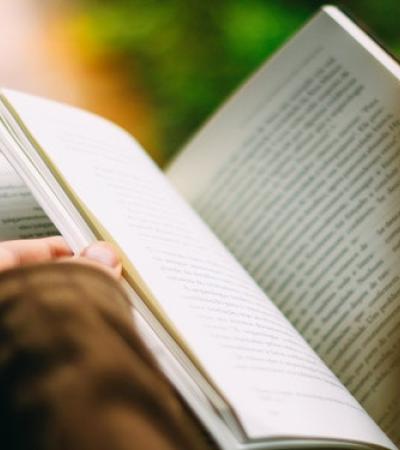After decades of attracting the attention of scientists and environmentally minded people, sustainability and climate change are moving to the forefront of public consciousness. Over 70 percent of the upcoming college-age generation care about global warming and climate injustices. A resilient and climate justice approach is growing.
One way to grow this in your community is through book reads and discussions. There are numerous new reads that can be read as a group to achieve different goals: to spark consciousness, build climate change knowledge, reflect and think, share lived experiences, grow community resiliency, create action or uncover untold stories.
Below are a list of recommended nonfiction reads for a climate-centered book club.
>>>See "Resilient Communities: A Programming Guide for Libraries"<<<
"A Field Guide to Climate Anxiety: How to Keep Your Cool on a Warming Planet" by Sarah Jaquette Ray, University of California Press, 2020
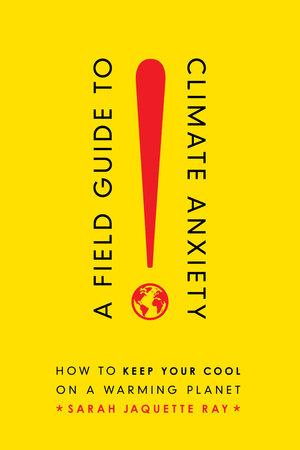
Ray, a professor of environmental studies at Humboldt State University, offers concepts to help us combat climate change while grappling with feelings of powerlessness and despair. Ray offers strategies for climate justice activists to avoid burnout, pulling together works of adrienne marie brown’s emergent strategy, Per Epsen Stoknes’s Five Ds, Bob Doppelt’s transformational resilience, Rebecca Solnit’s justice work, and Glenn Albrecht’s solastalgia, just to name a few. In summary: find pleasure in the work, slow down/be mindful, remember this is not a new crisis, find what you can do well and do that part, it takes a community, and you need to be able to dream of desires/envision a possible future.
Discussion questions to get started:
- How do you experience or observe the role of emotions in climate justice work?
- The heart, the hand, and the head are all needed for sustained engagement. What are the effective implications of the content you are daily exposed to?
"Drawdown: The Most Comprehensive Plan Ever Proposed to Reverse Global Warming" edited by Paul Hawken, Penguin Books, 2017.
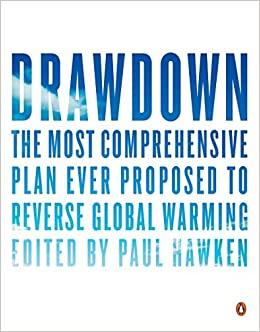
This book offers 100 most impactful solutions for slowing down climate change. The website offers even more updates, ideas, and solutions. A great read for adults, teens, or a mix, each short chapter offers a short- or long-term focus on a specific sector.
Discussion questions to get started:
- What obstacles stand in the way of achieving renewable energy alternatives to the status quo? How will a shift to renewable resources affect the country?
- Can you see a change where you live? Do you notice anything different about your local environment? Q Before reading the book, did you think of global warming as more of a problem for future generations rather than your own generation?
"Polluted Promises: Environmental Racism and the Search for Justice in a Southern Town" by Melissa Checker, NYU Press, 2005.
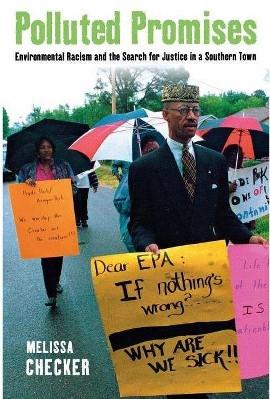
This book is a case study on the ways race and the environment are tied. It offers in-depth, yearlong, observational research by the author in a neighborhood in Augusta, Georgia, that is besieged by numerous toxic threats. Checker includes personal historical accounts of inequity experienced by the community, adding to our understanding of identity politics and grassroots organizing in the environmental justice movement. Checker’s book is suitable for adults or young adults, especially as a community read on an academic campus. Scholars and students in many disciplines—including social movements, race and ethnic studies, qualitative research methods, human geography, and environmental justice— may find this book of interest.
Discussion questions to get started:
- This book offers a look into the multiple ways in which race and the environment are connected. Can we think of examples of this in our own community?
- Checker says that many still fight for climate justice even after moving away, due to cultural, religious, or family ties to the area. Can anyone speak to this personally?
"Braiding Sweetgrass: Indigenous Wisdom, Scientific Knowledge and the Teachings of Plants" by Robin Wall Kimmerer, Milkweed Editions, 2013.
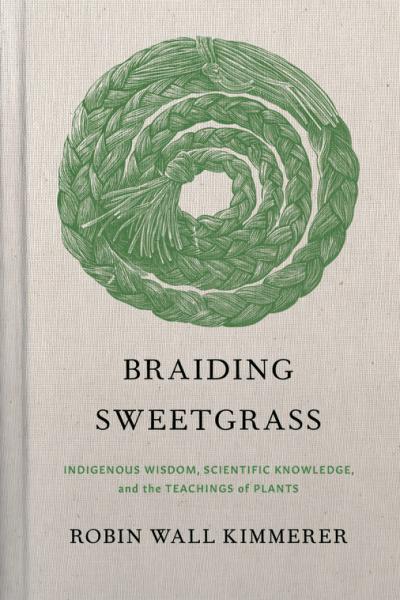
This book presents braided stories “meant to heal our relationship with the world” by weaving together the three strands of “indigenous ways of knowing, scientific knowledge, and the story of an Anishinabekwe scientist trying to bring them together in service to what matters most.” Its helps us reflect on our relationships to nature, the gifts from the Earth, and our responsibilities for these gifts. As a teen or adult read, this book allows readers to both reflect on their own personal connections to the earth as well as grow as a community.
Discussion questions to get started:
- Does the concept of trees having a community relationship, and the scientific explanations of their possible means of communication change how you view our relationship with forests? If so, how?
- Do you see the Earth as property or as a gift? How does this perspective change the way in which you view the value of what you take from the Earth?
"Emergent Strategy: Shaping Change, Changing Worlds" by adrienne maree brown, AK Press, 2017.
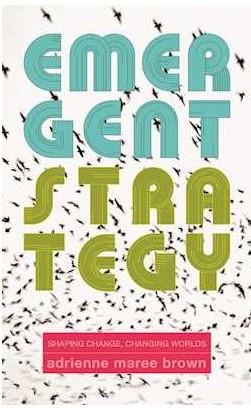
Emergent Strategy is a radical self-help, society-help, and planet-help book designed to help us shape the futures we want to live. Knowing that change is constant, the world is in a continual state of flux, ever-mutating, emergent patterns. The author reflects on Octavia Butler and helps us map, assess, influence, and learn what we can change or accept in a non-linear, uplifting, Afrocentrist incantation to transform us all. Brown’s book is a nonlinear read with lots to discuss for teens or adults.
Discussion questions to get started:
- brown asks, “How do we turn our collective full-bodied intelligence towards collaboration, if that is the way we will survive?” For example, ants work together, birds in a flock. What are examples of deep and radical collaboration we, as humans, can do in the climate justice movement?
- In reading this book several principles of emergent strategy arise, such as “never a failure, always a lesson;” and “small is good, small is all.” What principles will you take with you? How do you see that applying to climate crisis and justice work?
"Inconspicuous Consumption: The Environmental Impact You Don't Know You Have" by Tatiana Schlossberg, Grand Central Publishing, 2019.
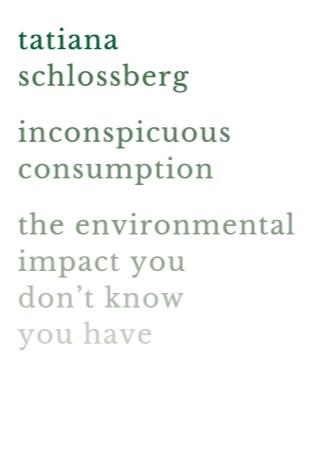
With a lighter, conversational tone, Schlossberg tackles the challenges of consumption and its impact on the environment. The book examines the unseen and unconscious environmental impacts in four areas: the internet and technology, food, fashion, and fuel. Most of the research and hard data is included as footnotes at the end of the book, allowing readers to quickly understand how the infrastructures behind different industries got us to where we are today. For teens or adults, this book will empower the reader to make simple daily choices.
Discussion questions to get started:
- Do you think that Schlossberg’s friendly writing style works well for communicating the serious topic of climate change and society’s harmful consumption habits?
- Unlike many books on climate change, Inconspicuous Consumption focuses more on demand, rather the supply as the problem driving climate change. Do you think it’s probable that society in general, and North Americans in particular, can be convinced to electively change their behaviors and lifestyles in ways that are less taxing on the environment? What would that take?
"Who Killed Berta Cáceres? Dams, Death Squads, and an Indigenous Defender's Battle for the Planet" by Nina Lakhani, Verso, 2020.
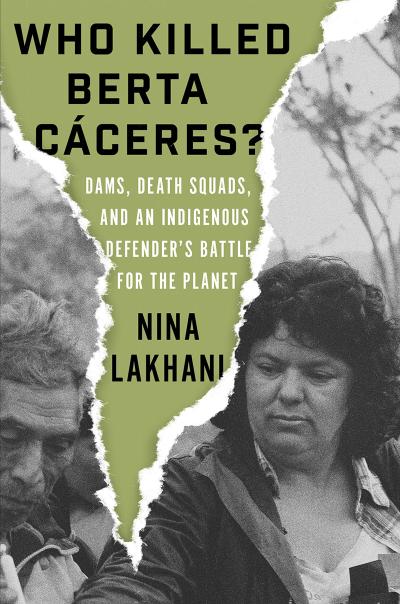
Nina Lakhani’s excellent journalism investigates the root causes of the killing of Berta Cáceres in 2016. Caceres was an indigenous environmentalist who stopped the building of a multinational dam project to protect the land of the Lenca people in Honduras. Examining the political landscape in Honduras and linking corruption, political unrest, and US foreign policy, she is able to present a clear picture of how environmental activists like Berta Caceres are targeted, and ultimately pay a price for protecting indigenous rights and their fight to preserve their land. Lakhani presents Caceres’ strong stance against patriarchy, racism, and capitalism and her clear vision of protecting the environment.
Discussion questions to get started:
- What connections can you make between the struggle of communities fighting to preserve their land rights and local concerns?
- What roles do political institutions play in the protection of the environment?


